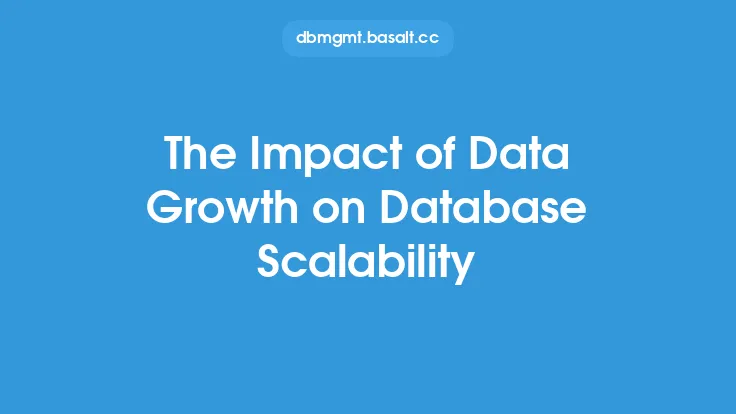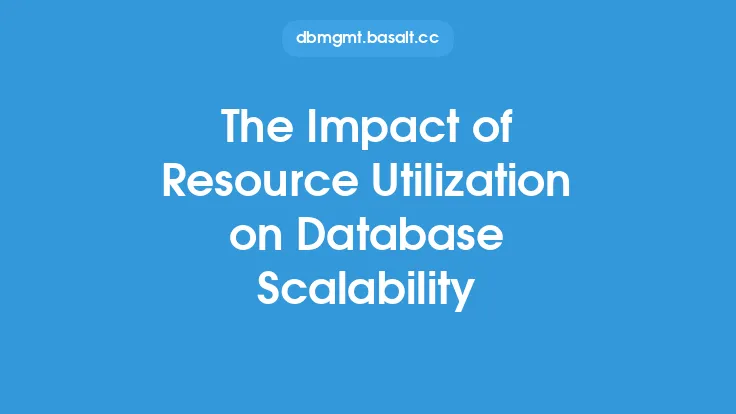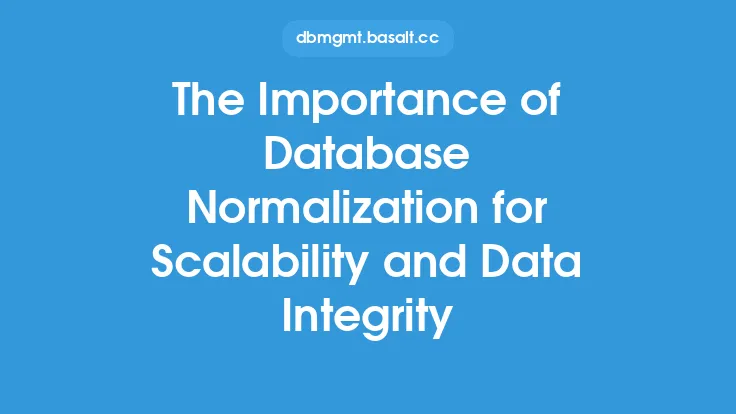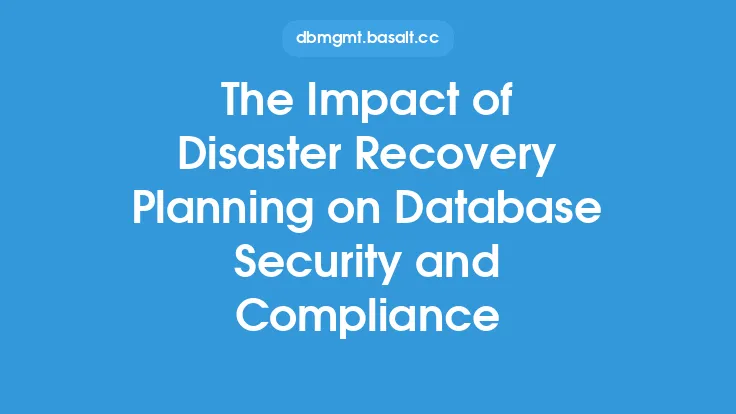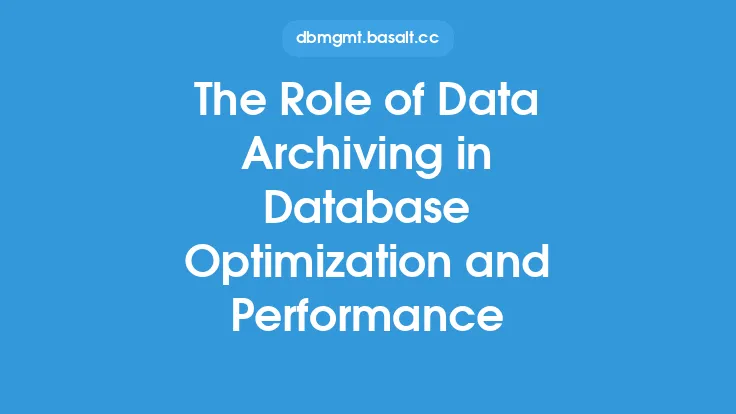Data redundancy is a common technique used in database design to improve the performance and scalability of a database system. By storing multiple copies of data, a database can reduce the time it takes to retrieve and manipulate data, making it more efficient and responsive to user queries. However, data redundancy can also have a significant impact on database scalability, which is the ability of a database to handle increasing amounts of data and user traffic without a decrease in performance.
Introduction to Database Scalability
Database scalability is a critical aspect of database design, as it determines how well a database can handle growth and increased demand. A scalable database is one that can handle increasing amounts of data and user traffic without a decrease in performance, and can adapt to changing requirements and workloads. There are several factors that can impact database scalability, including data redundancy, indexing, partitioning, and query optimization. In this article, we will focus on the impact of data redundancy on database scalability.
How Data Redundancy Affects Database Scalability
Data redundancy can affect database scalability in several ways. On the one hand, data redundancy can improve performance by reducing the time it takes to retrieve and manipulate data. By storing multiple copies of data, a database can reduce the number of disk I/O operations required to retrieve data, making it faster and more efficient. This can be particularly beneficial for databases that handle high volumes of read traffic, such as those used in e-commerce or social media applications.
On the other hand, data redundancy can also increase the amount of storage required to store data, which can impact database scalability. As the amount of redundant data increases, so does the amount of storage required to store it. This can lead to increased costs and complexity, particularly for large-scale databases. Additionally, data redundancy can also increase the complexity of database maintenance and administration, as multiple copies of data must be updated and synchronized.
Types of Data Redundancy
There are several types of data redundancy, each with its own impact on database scalability. These include:
- Horizontal partitioning: This involves dividing a table into smaller, more manageable pieces based on a specific criteria, such as date or location. Horizontal partitioning can improve performance by reducing the amount of data that must be scanned to retrieve a specific piece of information.
- Vertical partitioning: This involves dividing a table into smaller pieces based on the columns or fields that are most frequently accessed. Vertical partitioning can improve performance by reducing the amount of data that must be retrieved to answer a query.
- Data replication: This involves storing multiple copies of data in different locations, such as on different servers or in different data centers. Data replication can improve performance by reducing the time it takes to retrieve data, and can also improve availability by providing redundant copies of data in case of a failure.
Impact of Data Redundancy on Database Storage
Data redundancy can have a significant impact on database storage, particularly for large-scale databases. As the amount of redundant data increases, so does the amount of storage required to store it. This can lead to increased costs and complexity, particularly for databases that handle high volumes of data. Additionally, data redundancy can also increase the complexity of database maintenance and administration, as multiple copies of data must be updated and synchronized.
To mitigate the impact of data redundancy on database storage, database administrators can use a variety of techniques, such as data compression, data deduplication, and storage virtualization. Data compression involves reducing the size of data to reduce storage requirements, while data deduplication involves eliminating duplicate copies of data to reduce storage requirements. Storage virtualization involves abstracting storage resources to improve utilization and reduce costs.
Impact of Data Redundancy on Database Performance
Data redundancy can also have a significant impact on database performance, particularly for databases that handle high volumes of read traffic. By storing multiple copies of data, a database can reduce the time it takes to retrieve and manipulate data, making it faster and more efficient. However, data redundancy can also increase the complexity of database maintenance and administration, as multiple copies of data must be updated and synchronized.
To mitigate the impact of data redundancy on database performance, database administrators can use a variety of techniques, such as query optimization, indexing, and caching. Query optimization involves optimizing database queries to reduce the amount of time it takes to retrieve and manipulate data, while indexing involves creating indexes to improve query performance. Caching involves storing frequently accessed data in memory to reduce the time it takes to retrieve it.
Best Practices for Managing Data Redundancy
To manage data redundancy effectively, database administrators should follow several best practices, including:
- Monitor data redundancy: Database administrators should monitor data redundancy to ensure that it is not excessive, and that it is not impacting database performance or storage.
- Optimize data redundancy: Database administrators should optimize data redundancy to ensure that it is providing the best possible performance and availability, while minimizing storage requirements.
- Use data compression and deduplication: Database administrators should use data compression and deduplication to reduce storage requirements and improve utilization.
- Use storage virtualization: Database administrators should use storage virtualization to abstract storage resources and improve utilization.
Conclusion
In conclusion, data redundancy can have a significant impact on database scalability, particularly for large-scale databases. While data redundancy can improve performance by reducing the time it takes to retrieve and manipulate data, it can also increase the amount of storage required to store data, and can increase the complexity of database maintenance and administration. To manage data redundancy effectively, database administrators should follow several best practices, including monitoring data redundancy, optimizing data redundancy, using data compression and deduplication, and using storage virtualization. By following these best practices, database administrators can ensure that their databases are scalable, performant, and highly available, while minimizing storage requirements and complexity.
